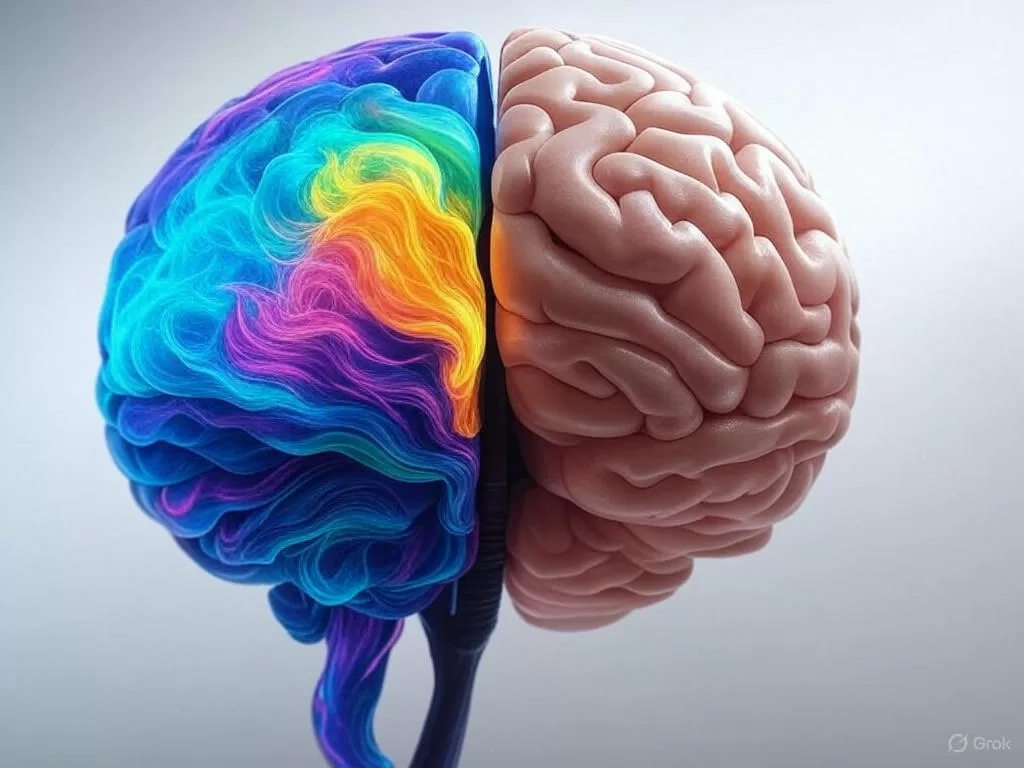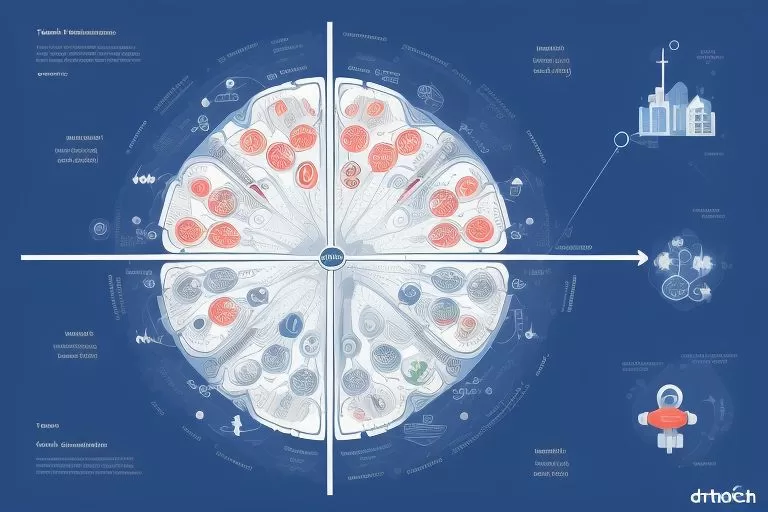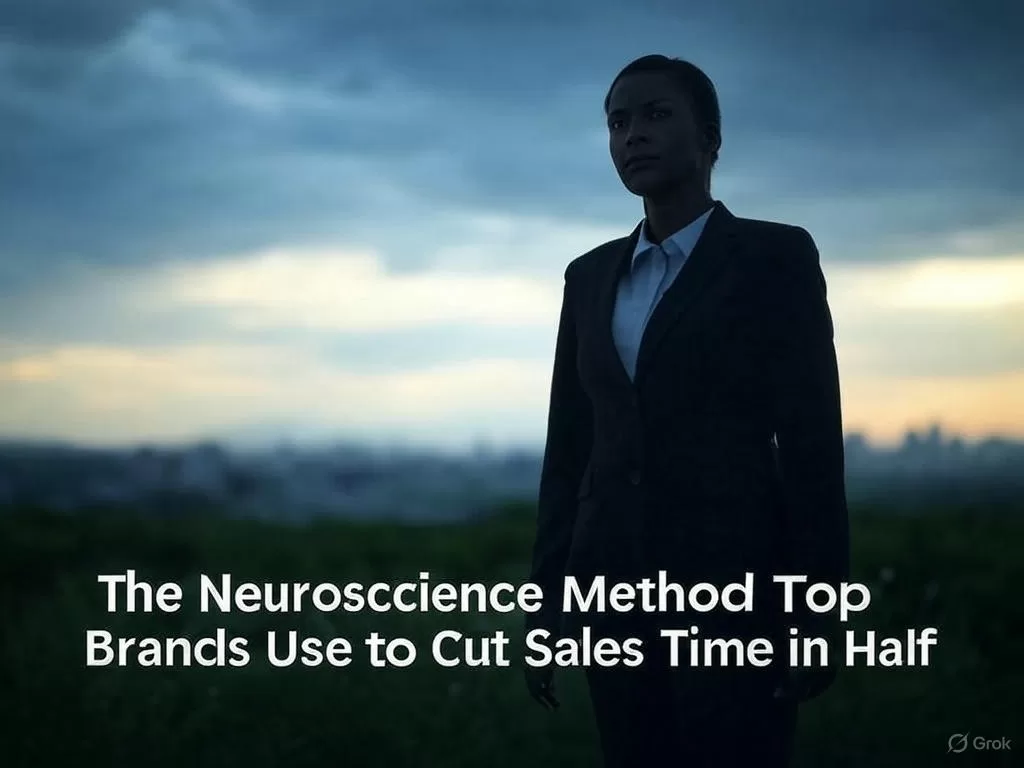In today’s hyper-competitive market, traditional sales funnels are no longer enough, especially when dealing with high-ticket products or complex B2B offers. Buyers aren’t just scrolling through features or price tags; they’re making decisions based on a delicate balance of emotion and logic. And if your marketing only speaks to one side of the brain, you’re losing potential customers daily.
The Deep Tatch Method challenges the outdated one-size-fits-all funnel by aligning your strategy with how the brain actually processes decisions. It blends emotional resonance with rational proof, accelerating conversions and shortening sales cycles—without burning ad spend on leads that never close.
If you’re serious about scaling with precision and intelligence, it’s time to stop guessing and start tapping into the psychology of why people buy.
🧠 The Science Behind Decision-Making

Dual Process Theory: System 1 vs. System 2
At the core of modern decision science lies Dual Process Theory, which explains how our brains juggle two different thinking systems. System 1 is fast, intuitive, and emotion-driven. It reacts instantly, often subconsciously. System 2, by contrast, is slow, rational, and deliberate. It kicks in when we compare options, research specs, or evaluate risk. Great marketing doesn’t choose one or the other—it speaks to both.
Why Speed of Purchase Varies by Brain Dominance
Some buyers act in minutes, others take months. Why? It depends on which brain system dominates. A System 1-driven buyer might impulsively purchase after a strong emotional nudge—like a powerful ad. A System 2 buyer, however, needs facts, stats, comparisons, and time. If your funnel only addresses one type, you’re losing the other half of the market.
Cognitive Biases CEOs Should Leverage
Cognitive biases like anchoring, FOMO, and social proof influence both systems. Smart marketers bake these into campaigns to guide buyers toward action. When leveraged correctly, these biases can shorten sales cycles, improve engagement, and drastically boost conversion rates—without manipulation.
🎯 What Is the Deep Tatch Method?

Bridging Neuroeconomics and Marketing
The Deep Tatch Method is where neuroeconomics meets marketing execution. It doesn’t just apply emotional storytelling or dry logic. It synchronizes both, rooted in how the brain processes value, urgency, and trust. It’s not guesswork—it’s science-based persuasion.
Why It Works for High-Stakes Decisions
For high-ticket offers or complex B2B sales, the stakes are too high for one-dimensional messaging. Deep Tatch helps buyers feel emotionally aligned while providing the rational proof needed to justify the decision. This dual-layered approach increases confidence and reduces buyer friction.
How It Outperforms Traditional Approaches
Traditional funnels push users down linear paths, assuming every lead thinks the same. Deep Tatch respects cognitive diversity. It turns your marketing into a multi-channel, multi-brain strategy—speaking to both the emotional fast-track and the logical side road simultaneously.
🔄 Emotional Triggers vs. Rational Proofs
Case Study: Fashion Brand Using Dual-Mode Triggers
One fashion brand used high-impact visuals and influencer emotion-driven content to hit System 1. But it also added detailed sizing guides, fabric breakdowns, and return guarantees for System 2. Result? A 38% increase in checkouts.
Case Study: Tech Brand Optimizing for Delayed Decisions
A smartphone company split its content: product pages led with elegant design imagery and lifestyle benefits, while deeper subpages offered spec comparisons and expert reviews. This helped engage both immediate buyers and spec-driven researchers.
Case Study: Travel Agency Appealing to System 1 & 2
Their ads were dreamy, with beaches and adventure shots. But the landing page followed up with transparent pricing, traveler reviews, and logistics breakdowns. Emotional pull opened the door, rational content closed the sale.
🚀 Deep Tatch in Action – Practical Applications

Email Sequences That Convert in 24 Hours
Start with story-driven subject lines that trigger curiosity and emotional resonance. Follow up with value-packed emails that provide data, pricing, and risk-reduction. This balance has proven to double email click-through and response rates.
Landing Pages Designed for Both Brain Systems
Above the fold: bold visuals, social proof, and emotional headlines. Below the fold: FAQs, technical specs, testimonials, and guarantees. This structure turns emotional interest into rational trust.
Social Proof and Urgency Without the Sleaze
Deep Tatch encourages ethical persuasion. Use countdowns, but tie them to real reasons. Highlight user success stories, but make them relatable. It’s about creating authentic tension that drives action without manipulation.
🧹 DAIV Framework – Cognitive Conversion in Practice
The DAIV Framework (Desire, Assurance, Information, Validation) is the structural core of the Deep Tatch Method:
- Desire: Trigger System 1 with emotional stories or visuals
- Assurance: Reduce fear by offering guarantees or return options
- Information: Satisfy System 2 with logic, data, and details
- Validation: Use social proof to confirm the buyer’s thinking
Every campaign built with DAIV becomes a conversion engine tuned to how the brain actually works.
📈 Key Benefits for Marketing Teams and Business Leaders
- Faster purchase decisions: By aligning with both cognitive systems
- Reduced bounce rates: Visitors find what their brain needs to move forward
- Higher ROI from ads and content: Better targeting, smarter messaging
- Wider audience appeal: Speak to emotional buyers and logic-driven decision-makers in one go
🧠 The Science Behind Decision-Making
Dual Process Theory: System 1 vs. System 2
At the core of modern decision science lies Dual Process Theory, which explains how our brains juggle two different thinking systems. System 1 is fast, intuitive, and emotion-driven. It reacts instantly, often subconsciously. System 2, by contrast, is slow, rational, and deliberate. It kicks in when we compare options, research specs, or evaluate risk. Great marketing doesn’t choose one or the other—it speaks to both.
Why Speed of Purchase Varies by Brain Dominance
Some buyers act in minutes, others take months. Why? It depends on which brain system dominates. A System 1-driven buyer might impulsively purchase after a strong emotional nudge—like a powerful ad. A System 2 buyer, however, needs facts, stats, comparisons, and time. If your funnel only addresses one type, you’re losing the other half of the market.
Cognitive Biases CEOs Should Leverage
Cognitive biases like anchoring, FOMO, and social proof influence both systems. Smart marketers bake these into campaigns to guide buyers toward action. When leveraged correctly, these biases can shorten sales cycles, improve engagement, and drastically boost conversion rates—without manipulation.
🎯 What Is the Deep Tatch Method?
Bridging Neuroeconomics and Marketing
The Deep Tatch Method is where neuroeconomics meets marketing execution. It doesn’t just apply emotional storytelling or dry logic. It synchronizes both, rooted in how the brain processes value, urgency, and trust. It’s not guesswork—it’s science-based persuasion.
Why It Works for High-Stakes Decisions
For high-ticket offers or complex B2B sales, the stakes are too high for one-dimensional messaging. Deep Tatch helps buyers feel emotionally aligned while providing the rational proof needed to justify the decision. This dual-layered approach increases confidence and reduces buyer friction.
How It Outperforms Traditional Approaches
Traditional funnels push users down linear paths, assuming every lead thinks the same. Deep Tatch respects cognitive diversity. It turns your marketing into a multi-channel, multi-brain strategy—speaking to both the emotional fast-track and the logical side road simultaneously.
🔄 Emotional Triggers vs. Rational Proofs
Case Study: Fashion Brand Using Dual-Mode Triggers
One fashion brand used high-impact visuals and influencer emotion-driven content to hit System 1. But it also added detailed sizing guides, fabric breakdowns, and return guarantees for System 2. Result? A 38% increase in checkouts.
Case Study: Tech Brand Optimizing for Delayed Decisions
A smartphone company split their content: product pages led with elegant design imagery and lifestyle benefits, while deeper subpages offered spec comparisons and expert reviews. This helped engage both immediate buyers and spec-driven researchers.
Case Study: Travel Agency Appealing to System 1 & 2
Their ads were dreamy, with beaches and adventure shots. But the landing page followed up with transparent pricing, traveler reviews, and logistics breakdowns. Emotional pull opened the door, rational content closed the sale.
🚀 Deep Tatch in Action – Practical Applications
Email Sequences That Convert in 24 Hours
Start with story-driven subject lines that trigger curiosity and emotional resonance. Follow up with value-packed emails that provide data, pricing, and risk-reduction. This balance has proven to double email click-through and response rates.
Landing Pages Designed for Both Brain Systems
Above the fold: bold visuals, social proof, and emotional headlines. Below the fold: FAQs, technical specs, testimonials, and guarantees. This structure turns emotional interest into rational trust.
Social Proof and Urgency Without the Sleaze
Deep Tatch encourages ethical persuasion. Use countdowns, but tie them to real reasons. Highlight user success stories, but make them relatable. It’s about creating authentic tension that drives action without manipulation.
🧹 DAIV Framework – Cognitive Conversion in Practice
The DAIV Framework (Desire, Assurance, Information, Validation) is the structural core of the Deep Tatch Method:
- Desire: Trigger System 1 with emotional stories or visuals
- Assurance: Reduce fear by offering guarantees or return options
- Information: Satisfy System 2 with logic, data, and details
- Validation: Use social proof to confirm the buyer’s thinking
Every campaign built with DAIV becomes a conversion engine tuned to how the brain actually works.
📈 Key Benefits for Marketing Teams and Business Leaders
- Faster purchase decisions: By aligning with both cognitive systems
- Reduced bounce rates: Visitors find what their brain needs to move forward
- Higher ROI from ads and content: Better targeting, smarter messaging
- Wider audience appeal: Speak to emotional buyers and logic-driven decision-makers in one go
📊 Comparison Table – Old School Funnels vs. Deep Tatch
| Feature | Traditional Funnel | Deep Tatch Method |
|---|---|---|
| Decision Speed | Medium to slow | Fast to medium |
| Buyer Type | Logical or emotional only | Appeals to both |
| Ad Strategy | One-dimensional | Dual-System Messaging |
| Conversion Optimization | Post-click | Pre-decision brain trigger |
| Result | Unpredictable conversions | More consistent high-ticket deals |
💡 CEO Insight – Why Emotional Intelligence Matters in Marketing
Modern marketing is no longer just about reach and impressions—it’s about resonance. Emotional intelligence in messaging, brand voice, and campaign structure is what separates scalable growth from wasted spend. CEOs who understand the power of emotional-logic synergy make better decisions, build stronger brands, and attract more loyal customers. Deep Tatch gives them a psychological edge.
🛠️ Implementation Blueprint
- Audit Your Funnel: Identify where you’re over-relying on logic or emotion.
- Rebuild Your Message: Integrate DAIV elements across key touchpoints.
- Redesign Your Pages: Above-the-fold = emotion; below-the-fold = logic.
- Test Dual Messaging: Run A/B tests with emotional hooks vs. logical anchors.
- Refine With Analytics: Use behavior insights to adjust emotional-rational balance.
- Train Your Team: Ensure copywriters, designers, and marketers understand System 1 & 2 dynamics.
✅ FAQs on the Deep Tatch Method
Is this method proven in B2B?
Yes. Deep Tatch is highly effective for B2B, where logical objections slow sales. Emotional positioning helps executives feel confident before they rationalize the investment.
How do I apply it to my current ad campaigns?
Start by balancing emotional visuals/headlines with rational body copy and CTAs. Make your campaigns speak to urgency and assurance at the same time.
What’s the ROI timeline?
Most businesses begin to see performance improvements within 3–4 weeks as bounce rates drop, session time increases, and decision speed accelerates.
🔚 Conclusion
The Future of Marketing Is Cognitive
Old-school funnels ignore how people actually make decisions. Deep Tatch aligns marketing with the brain’s natural process—blending emotional pull and rational validation. For CEOs and CMOs who want faster conversions, better leads, and scalable systems, Deep Tatch isn’t a trend—it’s the standard. If you’re still marketing like it’s 2015, you’re already behind. Upgrade your method. Influence decisions. Lead with brain-based strategy.

No responses yet